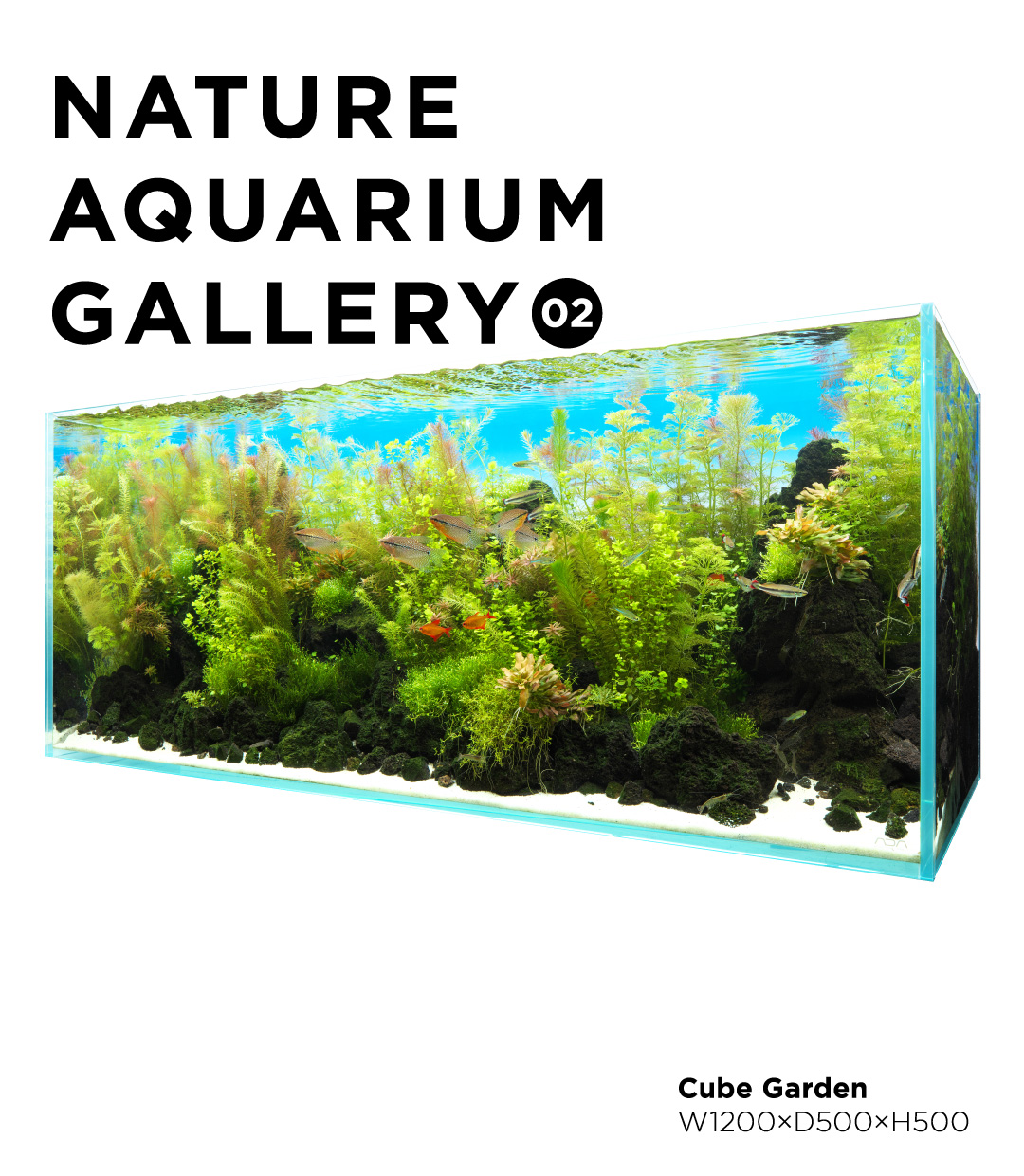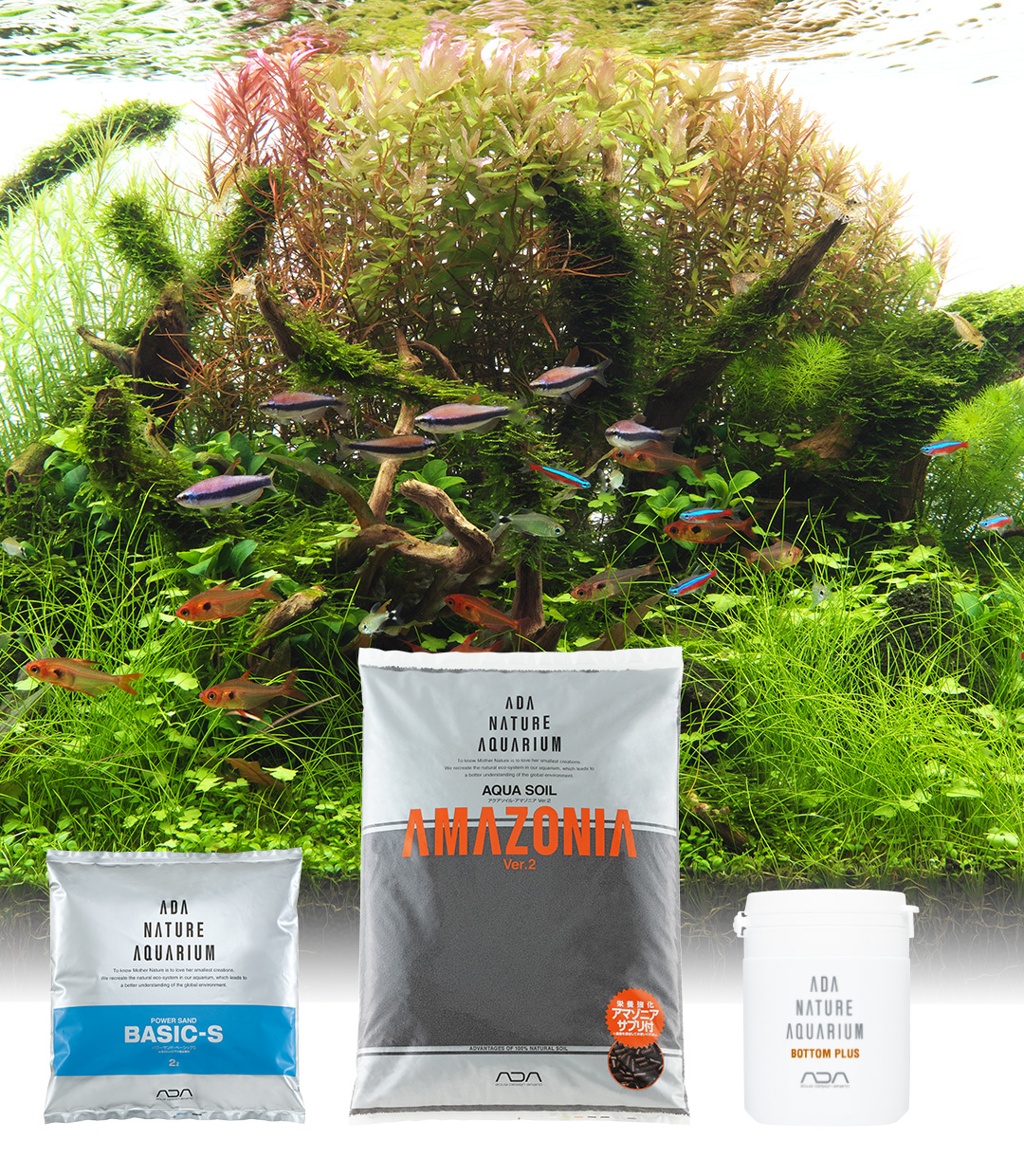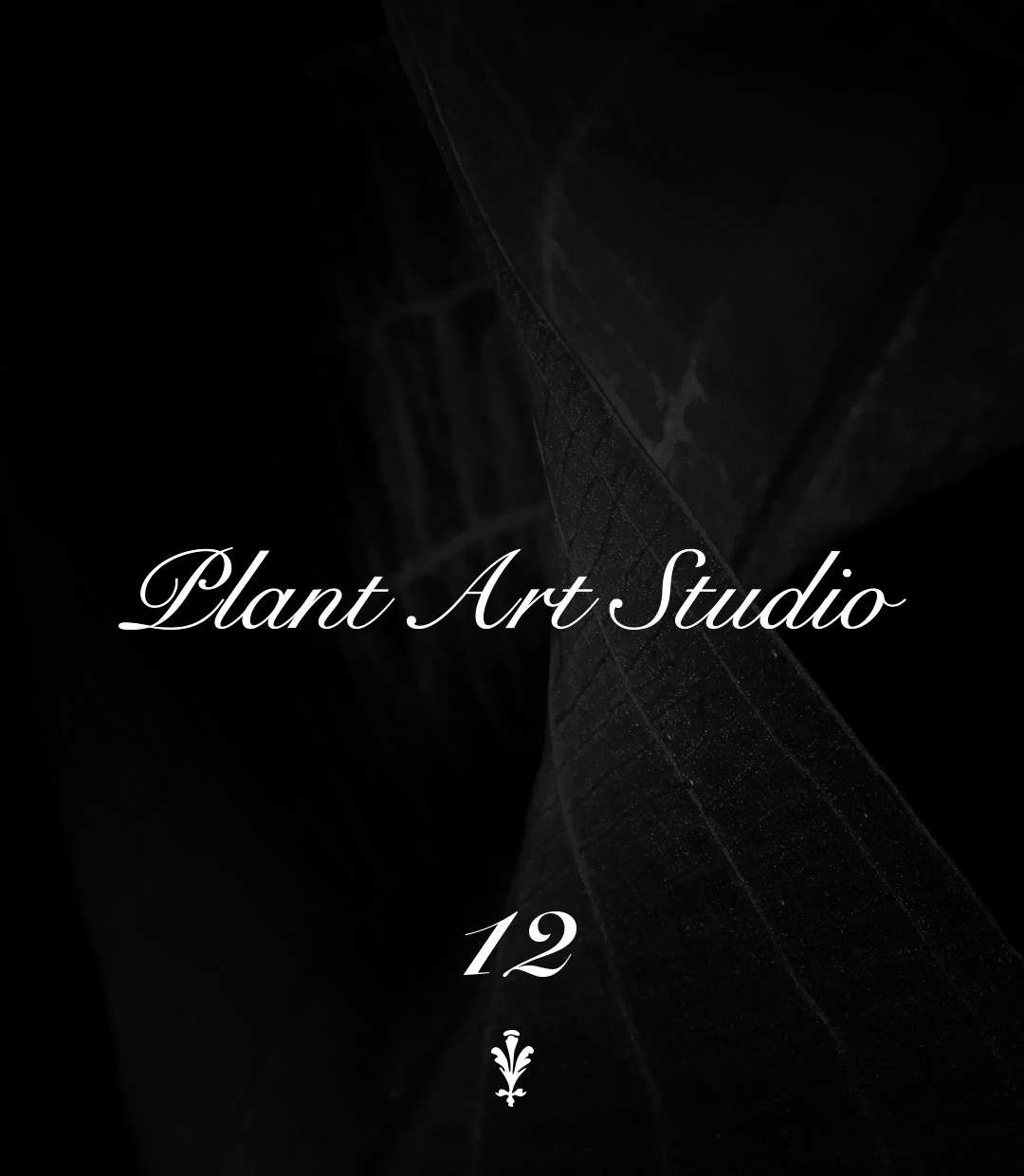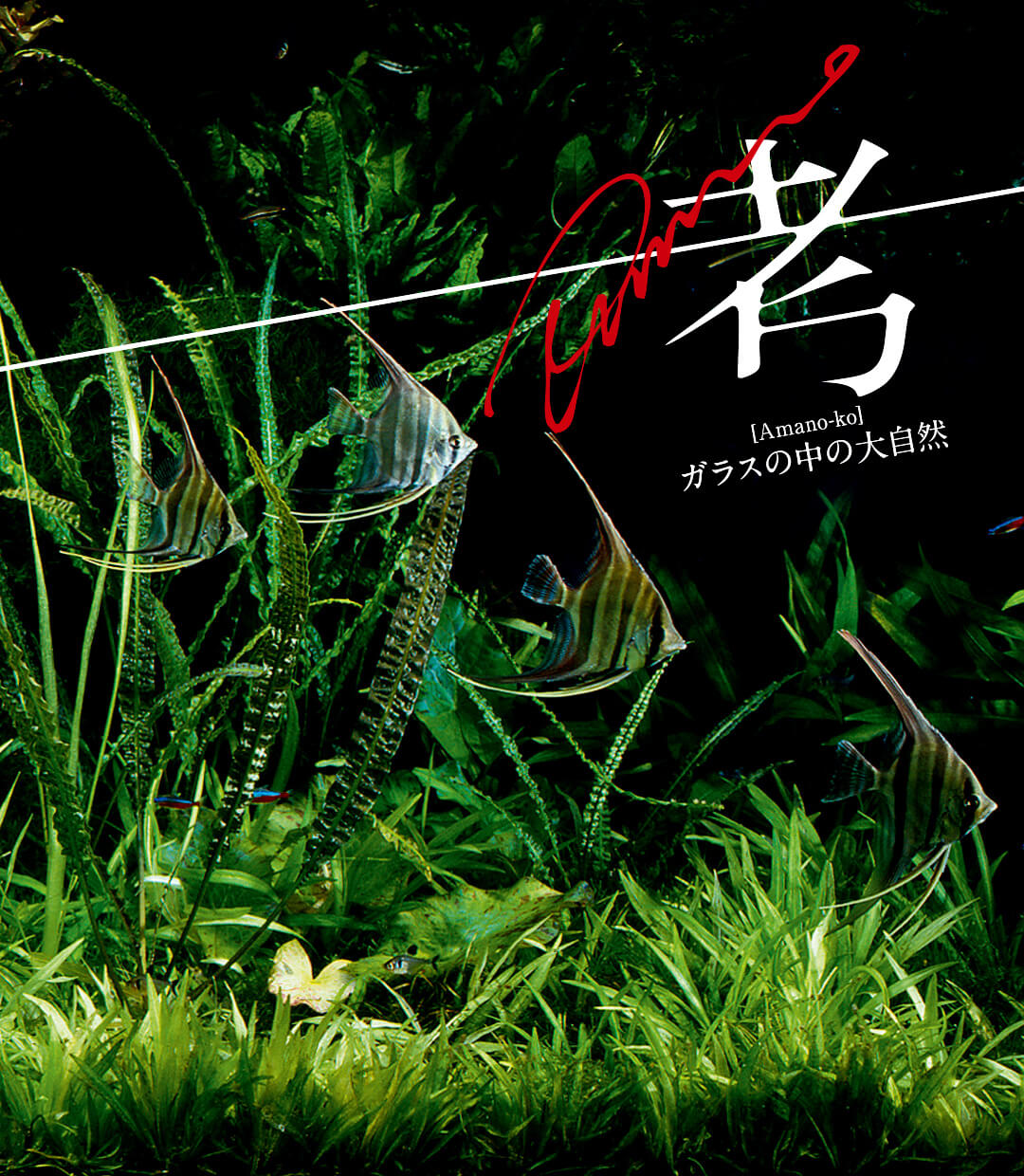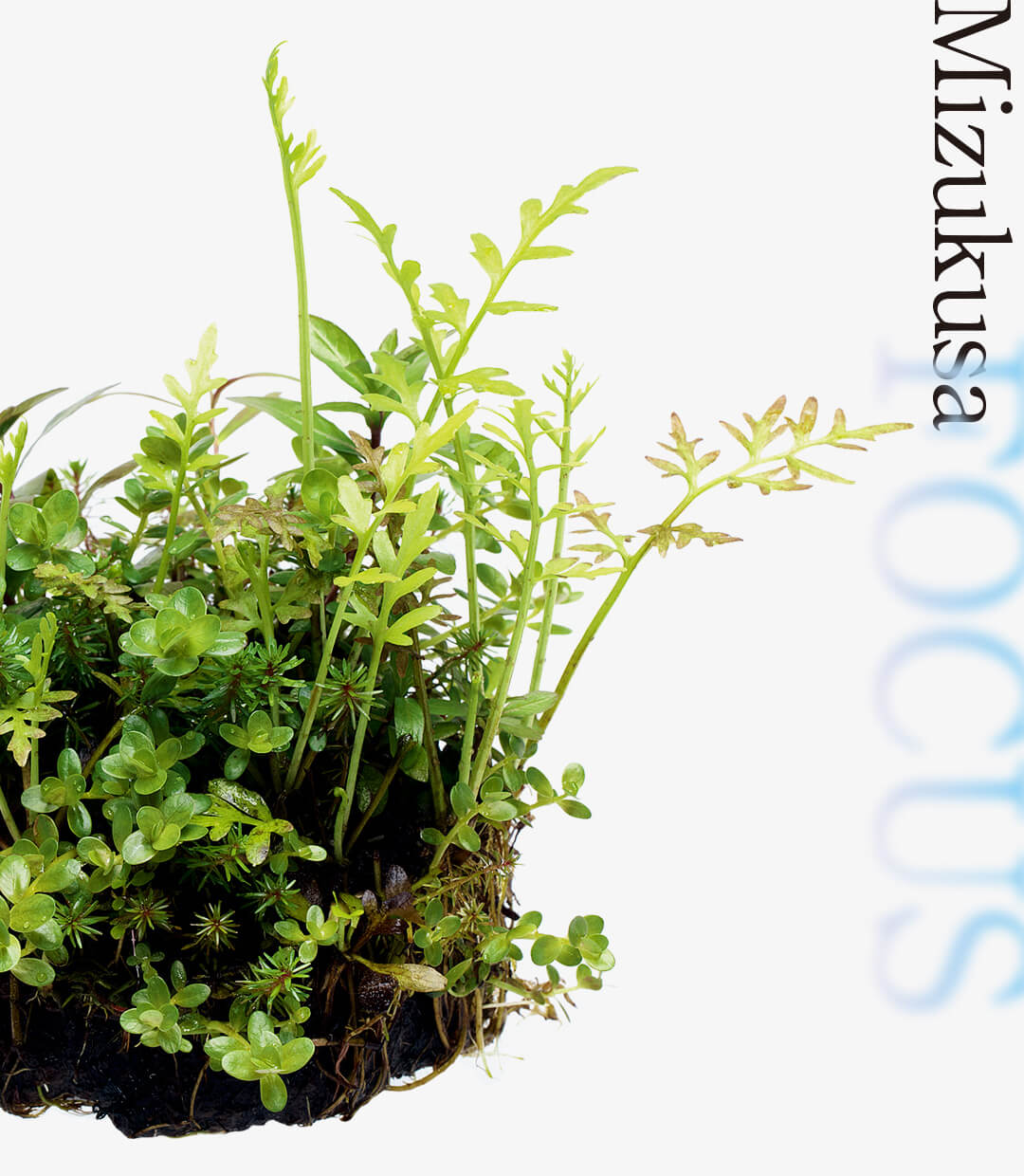LAYOUT 2024.05.03
CREATOR WORKS: Pondering the Waterside

My heart still skips a beat in that moment when a fish comes out from amongst the water plants. I believe that, at the root of my desire to create a japanesque aquascape, is my longing to return. The waterside I left in the memories of my childhood, it is always kind, always beautiful. To reflect that image I aimed for a tranquil aquascape, one to make observing the fish enjoyable.

Photographed on May 23, 2023

Photographed on October 25, 2023
Cretation date: May 23, 2023
Photo taken on: October 20, 2023
Creator: Daichi Araki(ADA SUIKEI CREATOR)
Aquarium: Cube Garden W1,800×D600×H600(mm)
Lighting: Solar RGB x 3 (8.5 hours per day)
Filtration: Super Jet Filter ES-2400 (Bio Rio G)
Material: Horn Wood, Manten Stone
Substrate: Aqua Soil – Amazonia Ver.2, Power Sand Advance L, Bacter 100, Clear Super, Tourmaline BC
CO2: Pollen Glass Beetle 50Ø, 5 bubbles per second via CO2 Beetle Counter (using Tower)
Aeration: 15.5 hours after the light is turned off using Lily Pipe P-6
Additives: Brighty K, Green Brighty Mineral, Green Brighty Iron, Green Brighty Nitrogen
Water change: 1/3 once a week
Water quality: Temperature 25°C, pH: 6.2, TH: 50 mg/L
Plants
1. Sparganium japonica
2. Nymphoides indica
3. Nuphar japonicm
4. Limnophila sessiliflora
5. Persicaria praetermissa
6. Eriocaulon sp. ‘Social Feather Duster’
7. Helanthium tenellum ‘Madeira’
8. Microcarpaea minima
9. Eleocharis montevidensis
Eleocharis acicularis
Riccia fluitans
Taxiphyllum barbieri
Fish
Rhodeus ocellatus kurumeus
Gnathopogon elongatus elongatus
Oryzias sp.
Crossocheilus oblongus
Otocinclus sp.
Caridina multidentata
Photo taken on: October 20, 2023
Creator: Daichi Araki(ADA SUIKEI CREATOR)
Aquarium: Cube Garden W1,800×D600×H600(mm)
Lighting: Solar RGB x 3 (8.5 hours per day)
Filtration: Super Jet Filter ES-2400 (Bio Rio G)
Material: Horn Wood, Manten Stone
Substrate: Aqua Soil – Amazonia Ver.2, Power Sand Advance L, Bacter 100, Clear Super, Tourmaline BC
CO2: Pollen Glass Beetle 50Ø, 5 bubbles per second via CO2 Beetle Counter (using Tower)
Aeration: 15.5 hours after the light is turned off using Lily Pipe P-6
Additives: Brighty K, Green Brighty Mineral, Green Brighty Iron, Green Brighty Nitrogen
Water change: 1/3 once a week
Water quality: Temperature 25°C, pH: 6.2, TH: 50 mg/L
Plants
1. Sparganium japonica
2. Nymphoides indica
3. Nuphar japonicm
4. Limnophila sessiliflora
5. Persicaria praetermissa
6. Eriocaulon sp. ‘Social Feather Duster’
7. Helanthium tenellum ‘Madeira’
8. Microcarpaea minima
9. Eleocharis montevidensis
Eleocharis acicularis
Riccia fluitans
Taxiphyllum barbieri
Fish
Rhodeus ocellatus kurumeus
Gnathopogon elongatus elongatus
Oryzias sp.
Crossocheilus oblongus
Otocinclus sp.
Caridina multidentata

SUIKEI CREATOR INTERVIEW
Daichi Araki
A japanesque aquascape formed by the natural growth of aquatic plants.
--- Please tell us about the aquascape concept you are currently working on.
The creative concept is “Japanese aquascape”. I have occasionally thought I would like to make a Japanese aquascape. When I ask myself why, I feel it stems from my desire to return to nature. As a child, for example, a time from which memories of the gentleness and beauty of nature remains in my mind, to play I would catch small fish from amongst the aquatic plants in the nearby river- now when I create I try to express those impressions. Wanting the title to include the two meanings, an evocation of a current Japanese waterside as well as that nostalgic waterside of my childhood memory, I came up with “Pondering the Waterside”.
--- About the layout composition, the impression is that the driftwood has settled. Tell us about the reasoning behind your selection of driftwood.
You can understand just by seeing the composition but, in terms of balance, I have built the framework quite low. As the composition is intended to express gentleness and serenity, I chose slightly low driftwood that appears as if it is fine with being absorbed by the plants. Furthermore, regarding the driftwood layout, it represents the process of a tree that’s fallen from a mountain to be carried in the currents of a river. The image I built the composition around is of a marsh or lagoon where such trees, their branches having been whittled off in the currents, come to rest. With that in mind, I chose old-looking driftwood with little branching for the layout.

Photographed on May 23rd, 2023
--- So you purposefully used deteriorated driftwood to express ancientness?
Yes. If I were making it based on an upstream scene I might feel it more fitting to use quite wild, smooth branch shapes but here, to suggest its having finally arrived, I portray a wetland in which one can feel time’s flow in the very driftwood itself.
--- In the completed aquascape the low driftwood has been buried as you had planned, what was your intention behind that?
In the bottom of the composition I layed out quite small driftwood pieces as if they were rolling. This was to create space and liveliness in the layout. Usually space is made using decorative sand, however, in this wetland picture I could not imagine much white sand or strewn rocks so I wondered how, without the use of those, I could best make space, and I concluded that I would create it with contrast by filling the empty spaces with these small pieces of driftwood. A positive thing about that is it puts badly shaped driftwood to good use. Even so-called low-grade driftwood pieces can be bunched together to express something worthwhile. Like how small stones in an Iwagumi layout are used to create space.
--- For planting, how did you select plants with this “Japanese aquascape” image in mind?
As I was saying earlier, I am creating a Japanese-style aquascape, but planting Helanthium tenellum ‘Madeira’ and several other species of aquatic plants not native to Japan. Actually, when creating Nature Aquarium, I often match the plants to their place of origin, but I don’t necessarily think it’s always required. Japan was not a tropical environment when I wanted to make this Japanese style layout, so there was this problem of some aquatic plants matching the Nature Aquarium and others not. I decided It’s ok to use what plants will work and replace those that wouldn’t work with something that looks similar. Essentially I selected aquatic plants that fit the scene within the Nature Aquarium without being strict.
--- I get the impression that the foreground and midground are kind of mixed, was that intentional?
Ah, yes. I planted tall plants in the foreground as I wanted to make an environment in which fish can hide amongst the plants like they did in my childhood experience. I planted many tape shaped and translucent aquatic plants to mitigate against the resulting heavy impression, aiming to preserve a sense of openness even while having them placed in the foreground. I think there is an overall impression of the planting being composed mainly of tape-like aquatic plants, but the tapes reaching up to the water surface are mostly Sparganium japonica. Other tapes I have planted are Helanthium tenellum ‘Madeira’ and Eriocaulon sp. ‘Social Feather Duster.’ Only, I feel that the ‘Social Feather Duster’ is not growing as much as I expected (bitter smile). I have also planted plants like Limnophila sessiliflora and Persicaria praetermissa, but rather than forming dense thickets of stem plants, they play a role closer to that of tape shaped aquatic plants. I feel that the red color of Persicaria praetermissa, which creates space towards the top while maintaining an airy feel, also gives a nice accent.
---How about your choice of Microcarpaea minima as ground cover instead of decorative sand?
Though ground cover such as Glossostigma would work fine, I chose Microcarpaea minima as it is related to plants often found in mountain villages and rice paddies in Japan.

--- Which of the aquatic plants that you have used here are you most fond of?
Of these, I really like Sparganium japonica. Its unusual light green color and soft, trailing appearance matches an aquascapes calm image. The tape shaped plant Vallisneria can also give that curtain-like effect but it grows so robustly that it can swallow up other plants in its vicinity. I also planted Nuphar japonicum. I like how it is so quintessentially aquatic-plant-like, with its large size and transparency. These expressions, whilst making me nostalgic, were also a discovery for me, a fresh experience. Nuphar japonicum has not really come up as an option when, for example, I am creating aquascapes at home. Now that it is available on the market, and has manageable growth habits, I think it will prove to be popular.
Of these, I really like Sparganium japonica. Its unusual light green color and soft, trailing appearance matches an aquascapes calm image. The tape shaped plant Vallisneria can also give that curtain-like effect but it grows so robustly that it can swallow up other plants in its vicinity. I also planted Nuphar japonicum. I like how it is so quintessentially aquatic-plant-like, with its large size and transparency. These expressions, whilst making me nostalgic, were also a discovery for me, a fresh experience. Nuphar japonicum has not really come up as an option when, for example, I am creating aquascapes at home. Now that it is available on the market, and has manageable growth habits, I think it will prove to be popular.

---Please tell us you feelings during the creating process.
I am pleased this aquascape turned out how I had envisioned. Whilst there was intent behind the layout, I was particularly moved by how the growth of the plants changed and evolved the scenery. Due to the species rich in transparency which I planted, I think, it became an aquascape which allows us to rediscover the essence of aquatic plants. I want to continue exploring techniques which help aquatic plants thrive naturally. The “natural control” that these plants have, rather than those which engulf an aquascape, are a key maintenance point. The Microcarpaea minima ground cover might get slightly overgrown but, overall, I think it is the kind of aquascape we, watching fish emerge from the lushness, can delight in.
Layout video now available in ADA view:
[ADAview] Pondering the Waterside 水辺を想う -W1800mm NatureAquarium Layout-【EN/JP Sub.】 (youtube.com)
I am pleased this aquascape turned out how I had envisioned. Whilst there was intent behind the layout, I was particularly moved by how the growth of the plants changed and evolved the scenery. Due to the species rich in transparency which I planted, I think, it became an aquascape which allows us to rediscover the essence of aquatic plants. I want to continue exploring techniques which help aquatic plants thrive naturally. The “natural control” that these plants have, rather than those which engulf an aquascape, are a key maintenance point. The Microcarpaea minima ground cover might get slightly overgrown but, overall, I think it is the kind of aquascape we, watching fish emerge from the lushness, can delight in.
Layout video now available in ADA view:
[ADAview] Pondering the Waterside 水辺を想う -W1800mm NatureAquarium Layout-【EN/JP Sub.】 (youtube.com)
